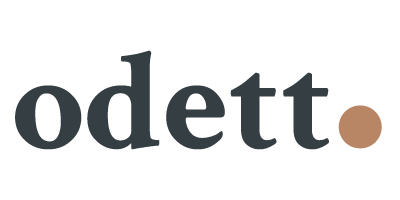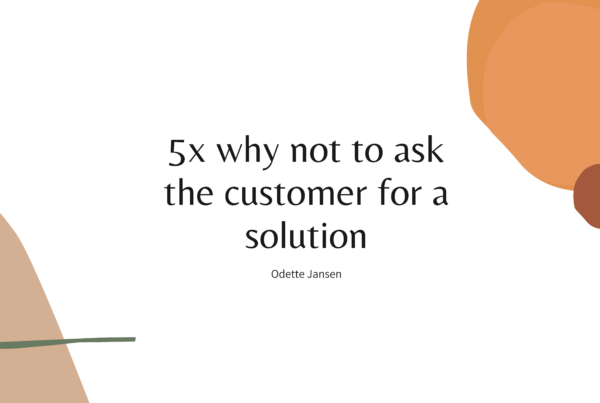Interviewing users is a good method to gather insights into a user’s wants, needs, and behavioral patterns. But a good interview is hard to set up. This article provides you with a comprehensive list of questions to inspire you and to help you achieve a successful interview.
User interviews can be implemented into the design process at any time depending on their goal. If you’re developing a new tool from scratch it can be useful to perform interviews to understand your target audience better. But if you’re further on in the design process, when you have a prototype or even a product already, user interviews can be used to determine whether or not the design you made fits the needs of the user. Look at where you are in the design process first to determine which type of evaluation method is most useful.
When you know where you are in your design process, ask yourself what it is you are trying to learn about your user. For example:
- Are you looking to find out more about the attitude of your user with regards to your product?
- Are you interested in understanding the users behaviors? Why would a user use your product? What happens when someone tells them about your product?
- Is the product (or a feature) easy to use? Is your user more likely to use feature A or B?
What to keep in mind during your interview
When you perform user research it is always best to record your sessions so you can look at them again later for further information. During a user interview, keep an eye out for changes in facial expressions and body language. Sometimes, when users are not entirely comfortable with the interview, they will try to give the answer they think you want to hear. Keep an eye out for these non-verbal cues so you can prompt them with follow-up questions. This way you will learn more about their feelings with regards to experiencing your product.
A few tips to keep in mind:
- Don’t try to ask all of the proposed questions, these are just examples. Prioritize the questions you need based on your research goals.
- For each answer, be sure to ask “why” or “why not” to dig deeper into your user’s thought process
- Ask open-ended questions to create opportunities for your user to tell you their stories.
Successful interview questions:
The following questions are example questions to use for your user interviews. Paragraphs 1 and 2 are useful in the beginning phase of your design, when there is no product yet, or when you are trying to work on a specific aspect of a project that hasn’t been developed yet. Paragraphs 3 and onwards are best used when you already have a product.
1. Putting the user at ease
One of the most important things during an interview is that your user is comfortable with you and the space they are in. This also goes for remote interviews. During the first interview you have, ask your user questions that they know the answer to. This gives a bit of a confidence boost and sets users at ease. At the same time, these questions can give you valuable insights into your user’s persona and day-to-day.
- What does a typical day look like for you?
- And what about a week?
- What do you use the internet for?
- Please tell me about hobbies you have
- What apps or websites do you use?
In addition, you can ask a user questions about their job title, what that role entails and any lifestyle questions you would like answered for your research. For example, if you are developing an app for pet owners, you could ask questions about their pet to learn more about that relationship.
2. Topic-specific questions
Topic-specific questions help you to understand what problems users face with the topic or problem that your product aims to solve.
- What’s your relationship like with [topic … e.g. pets, finances, etc]
- How do you currently go about [problem]?
- How much time do you typically spend on [problem]?
- Tell me about the last time you tried to [problem]?
- What do you like about how you currently [problem]?
- Why do you keep running into [problem] … why is it important to you?
- What’s the hardest part about [problem / task]?
- Who have you asked for help on this [problem]?
- How has that person helped you with [problem]?
- What are you currently doing to make this [problem / task] easier?
- How does this [problem / task] impact other areas of your life / work?
It can be useful to do a little bit of competitor research and ask your users about other, perhaps similar, tools they use.
- What other products or tools have you tried out?
- Have you paid for any of these other products?
- How much did you pay for these products?
- How did you hear about these other products?
- What do you like or dislike about these other products?
3. Product opportunity questions
If you have a product or prototype ready or want to test a new feature, then product opportunity questions are useful. These questions are designed to gather valid feedback and record the reactions of your user. The collected data can then be used to validate your problem solution.
- What do you think this product is about (as an initial reaction to the product)?
- What is your (first) impression of this product/feature?
- Why do you think someone would use this product?
- If you would use this product, what would it be for?
- What do you think this product is used for?
- On a scale of 1-5, where 5 being the highest how trustworthy does this product look?
- How do you think this product can help you?
- What could be reasons you wouldnt use this product?
- What other products does this remind you off?
- When and where would you use this product?
- What do you expect to gain from using this product?
- Of what other product does this one remind you?
- What would keep you from using this product?
- Could you describe what you feel about this product in 3 words?
4. Task-driven questions
These are the questions you can ask to check for specific tasks or user stories. These questions will help you determine the flow of your product and its usability.
- Could you describe what your first step here would be?
- If i´d ask you to perform [task X], could you tell me how you would go about achieving this?
- What do you expect to happen if you did [task X]?
- What do you think this button does? or Where do you think this button will lead you?
5. Product reaction questions
These types of questions will help identify suggestions or ideas a user may have. Ideally, you’ll ask these questions after the person has already used or tested the product via a walkthrough or micro-evaluation.
- What did you find most appealing about this product?
- What was the most difficult part to use in this product?
- Did you get stuck at any moment?
- Was anything surprising or did not perform as expected?
- Which task did you find easy? Why was it easy?
- Was there a task you found hard to complete? Which one was that and why?
- What did you miss in this product? or Did you expect to see something that wasnt here?
- Was there anything surprising or unexpected about this product?
- Why would you continue to use this product at a later time?
6. Successful follow-up questions
As stated before, it is good to use follow-up questions to dive deeper into topics and learn more about your users actions, thoughts, feelings and behavior. This is done by asking for a why or why not. Some examples for good follor-up questions are:
- You stated [feeling or thought], to what does this apply?
- You just mentioned [repeat a users utterances] what did you mean by this?
- You [showed a non-verbal cue] when I showed you the interface, what caused this reaction?
Conclusion
All of the above questions are good questions, carefully curated from various resources and personal experience. But what is most important to keep in mind is that you use questions that will help you learn more about the design phase you are in. Ask questions to further define a problem or a persona in the early stages and ask defining questions about the product during the development phase. And always make sure your questions are open-ended.
Sources




